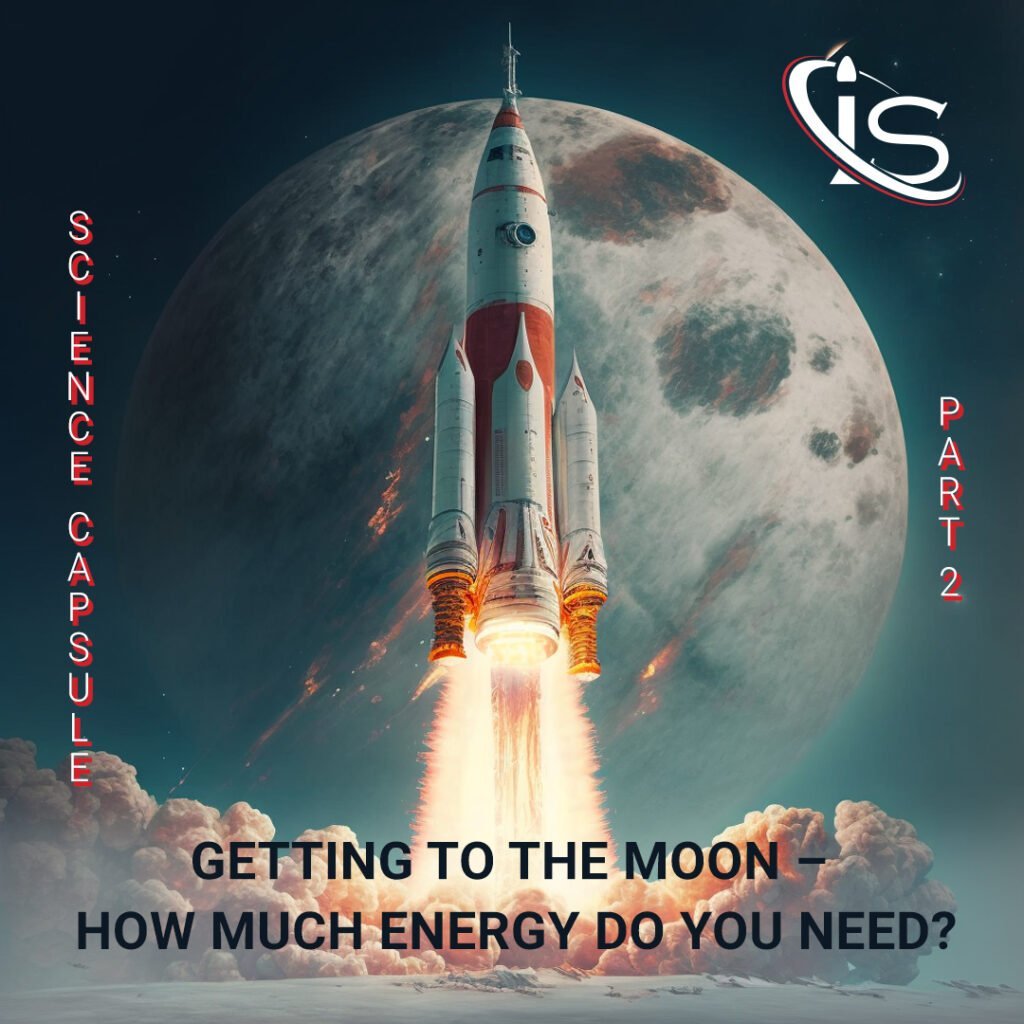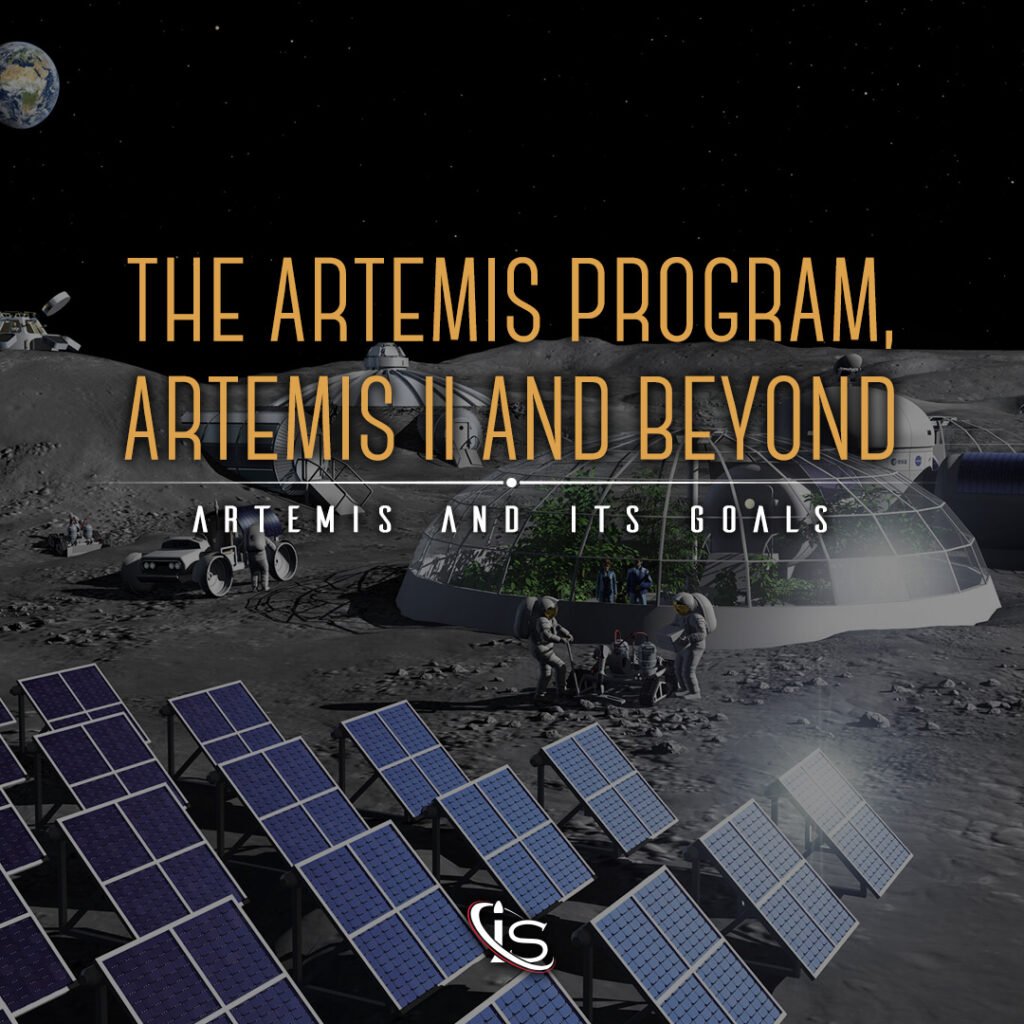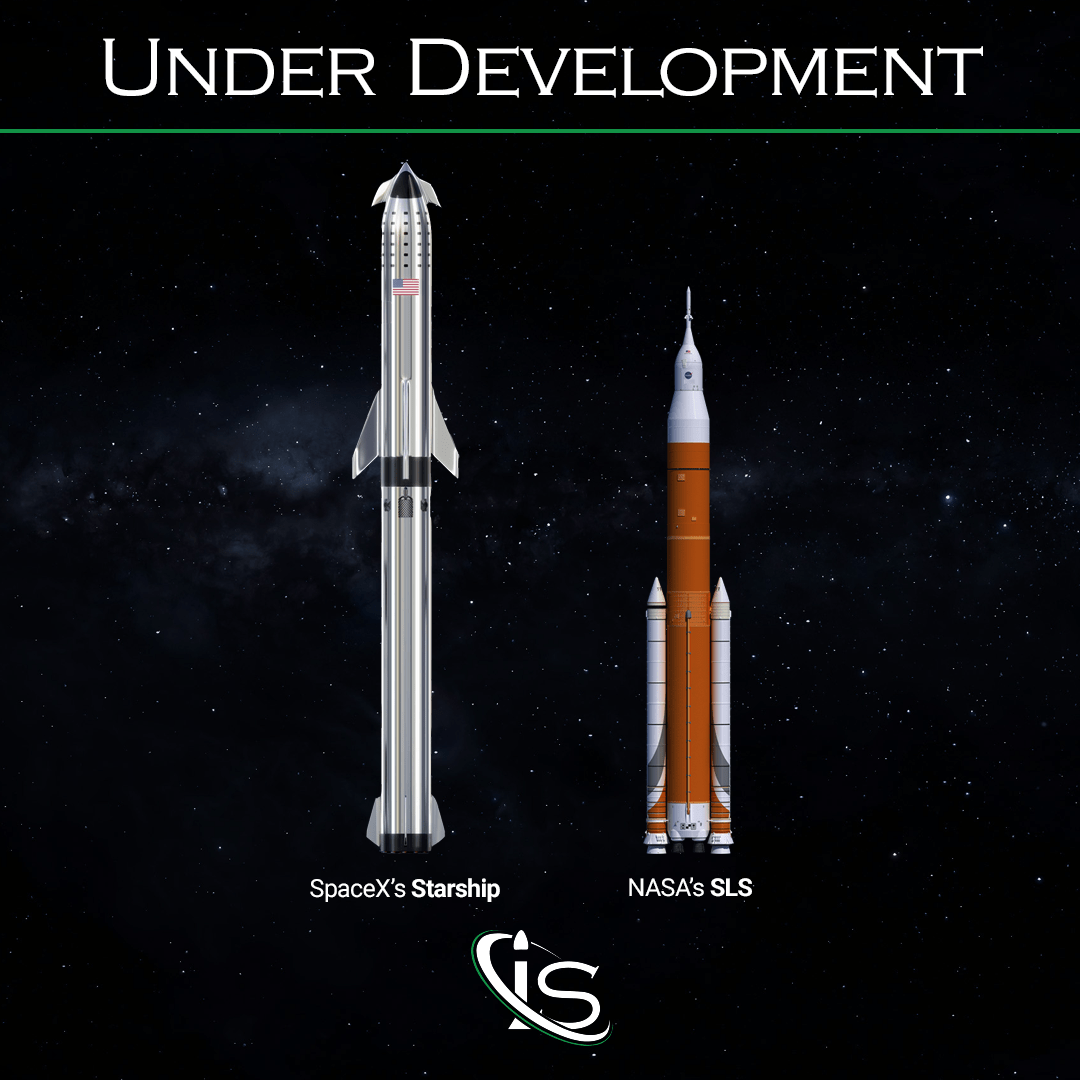Welcome to part 2 of our quest to find out how much energy it takes to get to the Moon. Once again, we will be using NASA’s Artemis program as the base of our calculations. Last time, we covered the trip up to LEO, or Lower Earth Orbit; so, all that is left to do is go over the rest of the trip. And that is going to be a bit more involved from a math standpoint than what we did on the last capsule.
Therefore, I am not going to go over all of the physics concepts in as much detail here. If you would like to learn more about that or would like a refresher, you can go check out Part 1 of this miniseries. Once again, just like last time, the calculations below are not meant to be accurate to the Artemis mission. Instead, said mission will be used as a basis to explore the various concepts regarding energy, and how it is transferred. And without further ado, it is time to uncover the energy needed to cross the space between Earth and the Moon.

The Players
For the previous calculations, all that was really needed was the measurements for the SLS (Space Launch System) rocket, its core stage, and its payloads. However, this time we are going to need to delve into the payloads themselves, specifically the one that will complete the trip to the Moon.
Just like last time, this is meant to be more so a way to explore this type of question, and not something that will give us the definitive numbers for the Artemis I mission. The good news is that, unlike part 1, we will need to make less approximations and assumptions… probably. While I still do not have access to all the minute details and numbers for this mission, the path taken from Earth’s LEO to the Moon is a lot more constant. And that is meant to be read quite literally. To get an idea of how much energy was required to get the SLS into space, almost everything had to be approximated. I am happy to say that this will not be the case (as much) this time around. But before we get to that, let us take a look at what is being sent to the Moon.
Orion
The main spacecraft that made the lunar journey is Orion. This will eventually be a manned machine; however, for the Artemis I mission, Orion was uncrewed and deployed from the SLS to a retrograde orbit around the Moon. This also means that a bit more energy would be required with people inside, but the difference would be relatively small in the grand scheme of things. Anyway, how big is Orion? Or, to be more specific, how massive is it?
Well, its mass at liftoff is approximately 32,660 kg. At the time of trans-lunar insertion, this number goes down to about 24,040 kg. And, lastly, its post trans-lunar insertion mass is going to around 23,360 kg. These numbers are all for the Artemis I mission, but that will more than suffice for this topic. Besides, the Artemis II numbers are very similar, just slightly higher. If anything, those second numbers could be a good chance for anyone interested to try and solve this problem themselves.
An Old Friend
Last time I went into detail about kinetic energy and how it is calculated, only for it to be replaced by the work done by the SLS, instead. While I still think it was helpful to go over all those concepts separately in part 1, it does work out rather well that part 2 would come full circle by having kinetic energy take center stage. Well, kind of. We could leave Kinetic Energy out of this altogether, but I think exploring it here could be rather fun. However, first things first, the equation for said energy of the kinetic variety:
![]()
Before we go further, I should reiterate a concept I mentioned last time. Kinetic energy is more of an instantaneous property. Therefore, if we want to find the total energy needed to reach the Moon, the work done by Orion will still be the way to go. However, I just want to quickly show just how high the kinetic energy for this spacecraft will be. And to do that, we will need Orion’s speed. Fortunately, this is a known quantity: 31,400 km/h or 8,722.22 m/s. So, the kinetic energy will be:
![]()
Note that I used the post trans-lunar insertion energy, as that is when this constant speed will be achieved.
Getting to the Moon
It is finally time to get the answer to our question: how much energy is required to get to the Moon? Last time, we saw that getting the SLS into LEO required a whopping 47,868,866,048.8 kJ. But what about the energy to get Orion to its orbit around the Moon? First, we need to split this question into two parts: the initial transit of Orion connected to the ICPS (Interim Cryogenic Propulsion Stage), which plays an integral part in propelling the SLS; and the trip Orion will take to the Moon itself. Unfortunately, the first part will require some of those good old approximations, which means we should get to it.
The ICPS
The various speeds I was able to find for the ICPS were not, much to my dismay, at LEO. Not exactly, at least. The closest I found was 23,424 km/h, or 6,506.67 m/s, at 1,800 km of altitude. As this is basically the 2,000 km where we left off last time, said speed seems like an appropriate one to use for this calculation. Where it gets more muddled, however, is the rest of the trip between 1,800 km of altitude and the separation of the ICPS and Orion.
There appear to be two phases here: the one from the ICPS Perigee Raise Burn and its TLI burn, and the one from the TLI burn to separation. On top of this, the ICPS will not just be going straight up or down at a constant acceleration, so a yet more approximations are needed. Regardless, this is what we would get using the available numbers:
ICPS Mass: 32,700 kg
Orion Mass: 32,660 kg
Total Mass: 65,360 kg
Perigee Raise Burn
![]()
![]()
a1 = 0.22 m/s2
a2 = 0.34 m/s2
S1 = 44 m
S2 = 968,000 m
W1 = 632,684.8 J
W2 = 21,511,283,200 J
WT = 21,511,915,884.8 J = 21,511,915.885 kJ
TLI Burn and Separation
a = 2.399 m/s2
S = 408,000 m
W = 63,973,845,120 J = 63,973,845.12 kJ
A Needed Explanation
As you can see, the first section had two parts to it. This was due to the way the active burn time was separated between the perigee raise and TLI. Technically, that was also the case for the second section. However, the speed there actually decreased from the active burn phase to the next, meaning the work done would be negative. Theoretically, this should make the total work done — and energy required — less. But we will not go into that for two reasons. One: while the energy required for the system would decrease, that is not the case for the energy provided by the engines. Two: I would have to make even more approximations as to when exactly the speed started decreasing, and, as this is still just an exercise to explore this topic, that would be more counterproductive than anything. At least in my opinion.
Once again, these are not exact numbers. I very much cannot stress that enough. However, they will more than suffice to provide an example for how to go about answering this sort of question. And for anyone curious, I did leave out some of my calculations — mostly the acceleration ones — as they were just extra busywork that did not add to the overall point. I also used some of the equations from last time here, which is why I did not go into detail as to what they represent. If you would like to learn more about that, you can, again, check Part 1 here.
The Final Answer
Now for the last part, getting Orion to the Moon. This spacecraft has an impressive main engine, with many smaller thrusters and engines being used to provide orbital corrections and altitude controls. However, not all of these will be constantly firing. Which means, you guessed it, more approximations. The main engine has a thrust of 25,700 N, with the eight thrusters providing an additional 490 N each when needed. Therefore, I will make the very arbitrary decision to have a total average thrust of 26,000 N. This is almost for sure not correct, but it will still do for the purpose of giving an idea of just how much energy we need to reach our satellite.
And so, with all the factors in play, it is time to get our final answer:
![]()
W = 9,841,598,000 kJ
Note that the distance here was simply the distance between Earth and Moon, minus the 3717 km that the Orion was already away from Earth. Adding all of today’s numbers with our energy total from part 1 yields:
![]()
WT = 57,795,949,809.81 kJ
The End
And that is how much energy it takes to get to the Moon. Well, using our approximations, of course. But then again, this was never meant to be an exact calculation for the Artemis I mission. In fact, Artemis I just provided the perfect chance to tackle a topic that I find fascinating.
Anyway, this will do it for me here today. I hope you enjoyed this little Moon themed escapade. If you would like to catch part 1 or any of our other capsules, you can simply check our website, impulso.space. I will “see” you all in the next capsule, which will come out on Wednesday, as usual.





